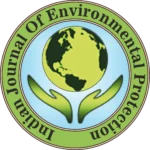IJEP 44(13): 1224-1230 : Vol. 44 Issue. 13 (Conference 2024)
Riya1*, Sakshi Chaudhary2, Anshul Singh2, Anshika Jakhmola2 and Mutaman Mohammed Alsamani Hago2
1. Graphic Era (Deemed to be University), Department of Microbiology, Dehradun – 248 002, Uttarakhand, India
2. Graphic Era (Deemed to be University), Department of Biotechnology, Dehradun – 248 002, Uttarakhand, India
Abstract
Cordyceps sinensis, a mushroom derived from the genus Cordyceae, has been shown to have promising anti-diabetic properties, according to in-silico approaches, such as molecular docking and the utilization of Dia-DB, which is a valuable platform for predicting and accelerating analytical interactions. In this study, we aimed to validate and substantiate the potential therapeutic potential of a bioactive molecule, namely cordycepin, with a specific focus on cordymin, using in-silico approaches. Through meticulous docking experiments, further validated by AutoDock Vina, we have identified potential candidate compounds with the highest binding scores, paving the way for potential therapeutic breakthroughs. Dipeptidyl peptidase 4 (DPP-4) emerged as an important focus for research, with a high binding affinity of -8.9 kcal/mol with 4A5S, a protein target. This shows that cordycepin may operate similarly to insulin, perhaps assisting individuals with diabetes in maintaining healthy blood sugar levels. The findings provided here open new avenues for medication research and development in diabetes control. Cordyceps, which has long been revered in traditional medicine, may hold the key to new therapeutic paths in a society coping with the growing worldwide challenge of diabetes. These findings highlight the need for continuing research into Cordyceps and its bioactive chemicals, emphasizing their potential as agents for regulating blood glucose levels, improving insulin sensitivity and reducing inflammation and oxidative stress associated with diabetes. Cordyceps may emerge as a powerful ally in the fight against diabetes as science continues this fascinating path.
Keywords
AutoDock Vina, Cordyceps, Dia-DB, Diabetes, In-silico analysis, Himalayan region, Molecular docking
References
- Tuli, H.S., et al. 2013. Cordycepin: A bioactive metabolic with therapeutic potential. Life Sci., 83(23): 863-869.
- Borde, M. and S.K. Singh. 2022. Prospects of cordycepin and polysacchorides produced by Cordyceps. In Fungal diversity, ecology and control management. Springer, Singapore. pp 93-107.
- De Manezes, T.A., et al. 2023. Unraveling the secrets of a double life fungus by genomics: Ophio-cordyceps australis CCM 8661 displays molecular machinery for both parasitic and endophytic lifestyles. J. Fungi. 9(1): 110.
- Bharti, B., et al. 2023. Review on pharmacological activity of caterpillar fungus (Keeda Jadi). J. Res. Appl. Sci. Biotech., 2(3): 126-133.
- Bhattarai, K., R. Bastola and B. Baral. 2020. Antibiotic drug discovery: Challenges and perspectives in the light of emerging antibiotic resistance. Adv. Genetics. 105: 229-292.
- Pereira, A.S.P., et al. 2019. Exploring African medicinal plants for potential anti-diabetic compounds with the DIA-DB inverse virtual screening web server. Molecules. 24(10): 2002.
- Pang, L.Y., et al. 2023. Biopharmaceutical potential Ophiocordyceps sinensis for human health. In Mushrooms with therapeutic potentials: Recent advances in research and development. Springer Nature, Sigapore. pp 189-219.
